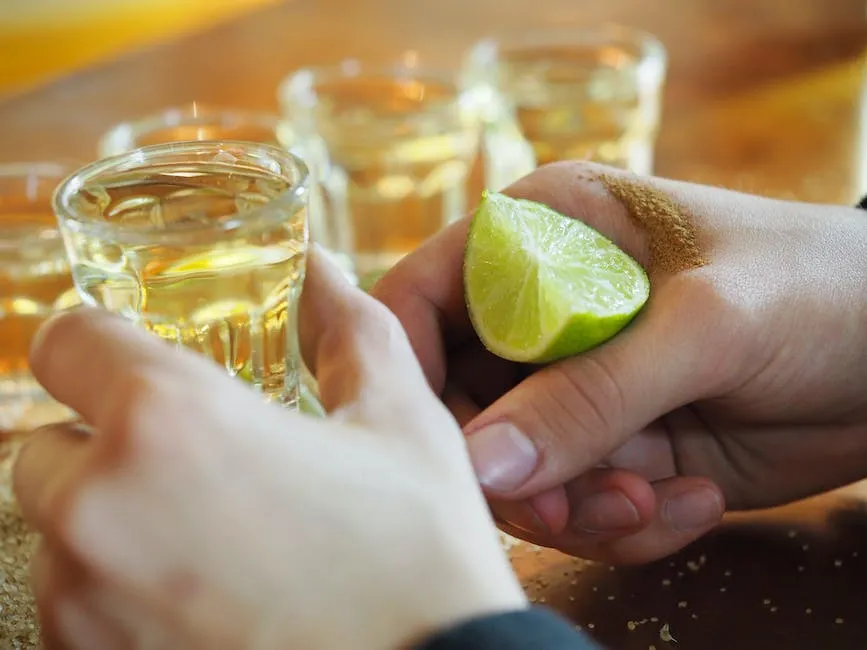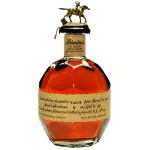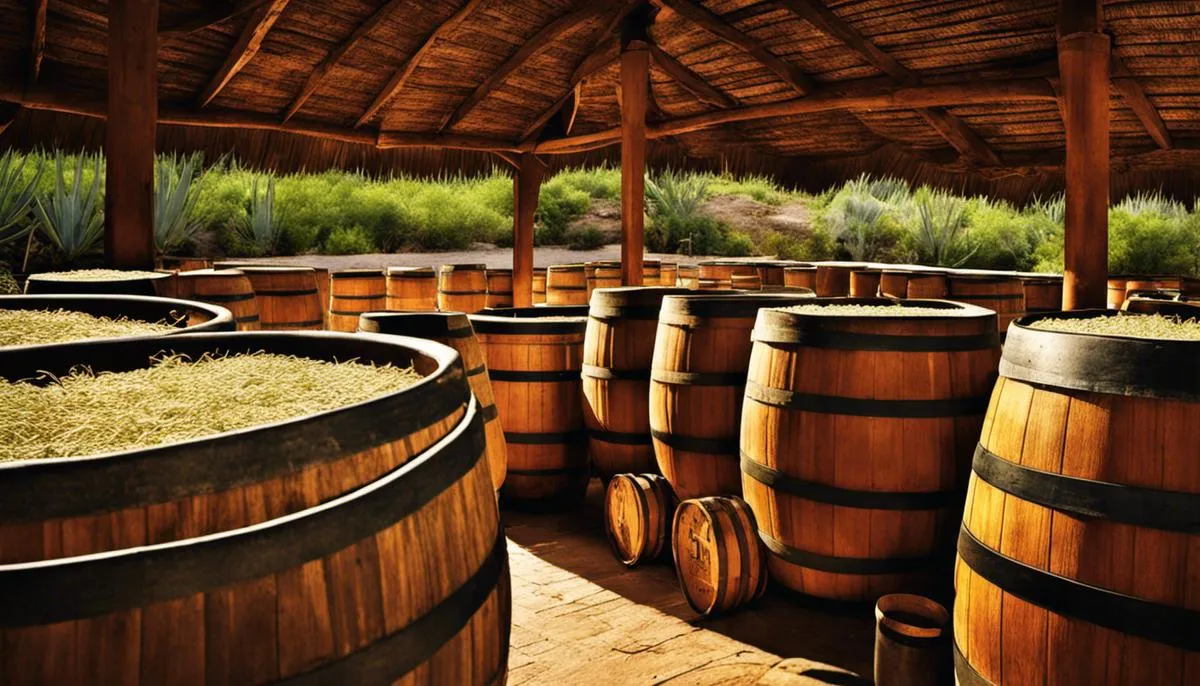Immerse yourself in the striking world of tequila, an iconic spirit that encapsulates Mexico’s rich heritage and biodiversity. The adventure begins with understanding its origin, the stringent laws governing its production, and the distinction between Blanco, Reposado, Añejo, and Extra Añejo – each presenting a unique blend of craftsmanship and flavor. The journey winds through the cultural significance of savoring tequila in its purest form—neat. Discover how this traditional method unveils the beverage’s complexity, offering a more profound tasting experience. As we progress to the facets of etiquette, unravel the artistry and precision of sipping tequila neat, deciphering the protocols that impact your overall enjoyment. Forays into the dos and don’ts, punctuated with practical tips and methodologies such as the ‘kiss method,’ will equip you with the wherewithal for an enriched tequila-tasting expedition.
Understanding Tequila
Origin and History of Tequila
Tequila is a distilled alcoholic beverage made primarily from the Blue Agave plant, which is native to Mexico. The history of tequila dates back to the Aztecs, around the 16th century, who used the fermented sap from the agave plant to make a drink called pulque. When Spanish conquerors ran out of their brandy, they began to distill agave, which marked the very first production of tequila.
The town of Tequila, located in the Jalisco state of Mexico, gave the drink its name and is still the primary source for its production today. In the 19th century, tequila began to be mass-produced and by 1884, the Mexican government had established a standard method for its production.
Laws and Regulations Around Tequila Production
Tequila is heavily regulated by the Mexican government. According to Mexican law, tequila can only be produced in certain regions – mainly in Jalisco and some areas in Guanajuato, Michoacán, Nayarit, and Tamaulipas. Furthermore, it must be made from blue agave and producers are required to have a license from the government in order to grow the agave and produce tequila.
The regulations also differentiate between 100% agave tequila and mixto tequila (made by blending agave with other sugars). To ensure quality and authenticity, each bottle of genuine tequila is given a Norma Oficial Mexicana (NOM) number indicating the distillery where it was produced.
Different Types of Tequila
There are five primary types of tequila, each defined by their method of production and aging process.
-
Blanco or Silver tequila is the purest form of the drink. It is clear and typically unaged, with the flavor of the distilled agave front and center.
-
Reposado or “rested” tequila is aged in oak barrels for anywhere from two months to a year which results in a golden hue and an added complexity to the flavor.
-
Añejo, which means “old”, is aged for a year to three years in small oak barrels, giving it a dark color and rich, complex flavor.
-
Extra Añejo is a relatively new category of tequila that is aged for more than three years. The extended aging process results in a tequila that is smoother, more complex, and typically more expensive.
-
Joven or “gold” tequila is typically a mixto, where colorants and flavorings are added before fermentation.
Savoring Tequila Neat
Savoring tequila neat—drunk straight without the meddling of mixers or ice—tends to offer a full-blown experience of its unique flavors and depth. Drinking tequila this way mandates a minimalist approach: pouring into a slim glass and slightly inclining it to scrutinize the tequila’s thickness and the “legs” or the residual streams that dribble down the glass wall, indicative of quality.
Regular consumption of tequila might often involve quick shots and lime wedges, but those don’t truly unlock the burst of easily-missed flavor. As an alternate experience when drinking tequila neat, it is suggested to take slow sips and let the tequila touch all parts of your palate. Therein, you allow yourself to discover diverse notes of flavor, like citrus, pepper, or caramel that the agave plant and the aging process leave behind.

The art of Drinking Tequila Neat
Unraveling the Cultural Depth of Drinking Tequila Neat
In the traditional habitat of tequila, Mexico, the practice of drinking tequila neat—undisturbed by mixers or ice—is embedded deep in their culture. This custom, tracing back centuries, roots in a wide and diverse history as nuanced as the spirit itself. Within the cultural ambit of Mexico, consumption of tequila neat is more than a mere beverage—it signifies moments of celebration. It marks significant milestones of life, such as weddings or anniversaries, and is a staple at celebratory events. Adding a quirky touch, many Mexican families reserve a special ‘tequila chair’—an allocated place for those ready to relish the unique spirit standalone.
The Rationale Behind Drinking Tequila Neat
The rationale behind drinking tequila neat is all about savoring the spirit’s complexity and flavor. Tequila is made from the blue agave plant, which takes between eight and 12 years to mature enough to be harvested for tequila production. The plant’s sugars, once extracted and fermented, contribute to the spirit’s unique profile. Drinking tequila neat allows one to appreciate these subtle flavors without dilution or any masking mixers. The presence of agave, earthy or floral undertones, hints of spice, or even notes of chocolate might be discernible in high-quality tequilas.
Enhancing the Tequila Tasting Experience
Drinking tequila neat can be an enlightening experience when done correctly. An important aspect of this is the temperature of tequila. It is best served at room temperature as chilling it can dull or numb the flavors. When it’s served neat at an optimum temperature, the spirit’s depth and complexity can be savored. To further enhance the tasting experience, try taking a small sip and letting it sit in your mouth before swallowing. This allows the flavors to open up on the different areas of your palate, revealing the tequila’s unique characteristics more fully.
The Right Glassware for Drinking Tequila Neat
Just as with wine, the glassware used to consume tequila can influence the overall tasting experience. Traditional caballito shots aren’t ideal for drinking tequila neat since they don’t allow for the sensory experience associated with swirling and sniffing the spirit. Fine tequila should ideally be served in a glass that is narrower at the top, such as a Tequila flute or a small cognac snifter. This glassware shape concentrates the spirit’s aroma towards the top, allowing you to better appreciate and savor the nuances.
Art of Drinking Tequila Neat
More than just a way to consume tequila, drinking it neat is an experience—an art in its own right. It is intended to be thoughtful and savored, not hurried. When it comes to choosing a type of tequila for this purpose, look for those labeled “100% de Agave,” which signifies they’re made solely with blue agave, and don’t have added sugars or flavors. The brands and specific tequilas that are best to be enjoyed neat are often the Reposado, Añejo, and Extra Añejo varieties, which have richness and depth thanks to the aging process.
The tradition of drinking tequila neat provides a unique pleasure and intimacy that becomes more prominent with each tasting. However, always remember that the ultimate goal is to enjoy the experience as per your personal preference.

Tequila Etiquette and Tips
Diving into the Etiquette of Tequila
As you immerse yourself into the habit of drinking tequila neat, it’s important to grasp some of the fundamental etiquette for an outsized authentic experience. For starters, serving between 1 and 1.5 ounces is considered a standard measure that allows the drinker to intrigue all the flavors without feeling overpowering.
Savoring the tequila by taking small sips instead of finishing it off in one go is key to really appreciate the depth and nuances of flavors. It’s judicious to keep your servings limited up to five neat tequilas in a single night. Remember, drinking becomes a health hazard, potentially causing liver disease and alcohol poisoning, if it crosses the line of moderation and is done in excess.
The ‘Kiss Method’
One popular method for drinking tequila neat involves a process known as the ‘kiss method.’ This technique suggests treating each sip of tequila much like a kiss, meaning you should savor and enjoy it to its fullest. The idea is for each sip to hit different areas of your palate, allowing you to experience all the spirit’s flavors and complexity.
Take a moment to appreciate the smell and color of the tequila before you drink. Then, take a small sip and let it sit in your mouth for a moment before swallowing. After swallowing, breathe out through your mouth to let the flavors linger.
Debate About Salt and Lime
Traditionally, tequila shots are accompanied by a lick of salt and a bite of lime. However, when drinking tequila neat in the context of a tasting experience, the use of salt and lime is often discouraged. These additional elements can overpower and mask the natural flavors of the tequila, preventing you from fully appreciating the profile of the spirit. To truly savor the complex characteristics of tequila, avoid the salt and lime and focus solely on the spirit itself.
Dispelling Tequila Myths
There are several myths and misconceptions about tequila that can mislead drinkers. One common myth is that real tequila has a worm in the bottle. This is a marketer’s gimmick that has no basis in fact. Quality tequila does not contain any pests or foreign substances, as they would ruin the spirit’s taste.
Another common myth is associating specific types of tequila with headaches the next day. However, the chance of a hangover is often more directly related to consumption levels, and not the type of tequila consumed. Last but not least, while ‘gold’ tequila can be visually appealing, it’s important to remember that these tequilas often contain artificial colorants and additives, and aren’t necessarily a sign of quality. When it comes to choosing a good tequila, always look for bottles labeled ‘100% agave’, indicating they’re made from the purest form of the plant. This will ensure a higher-quality spirit and a more authentic drinking experience.

The journey through the remarkable tequila trail unveils a tapestry of a long-cherished tradition that invariably involves more than just an ordinary drink. As you appreciate its rich heritage—the backdrop of its origin, the disciplined production, the distinctions between various types, you begin to understand why this drink is a symbol of Mexican pride and culture. The commitment to drinking it neat is not just a testament to this cultural identity but also a gateway to unraveling the layered flavors that tequila presents. Mastering the etiquette of drinking tequila neat accentuates this voyage, fostering a profound connection with the spirit and its nuances. The exploration and debunking of popular myths also contribute to making this journey an enlightening one, subtly shifting general perceptions about tequila. Armed with these insights, you are now equipped to venture forth, making each sip of tequila a part of an ongoing exploration of flavors, traditions, and experiences.











